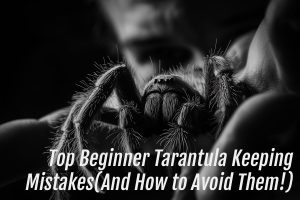Brachypelma hamorii also known as Mexican Red Knee Tarantula
The Mexican Red Knee Tarantula, formerly known as Brachypelma smithi but now classified as Brachypelma hamorii, is perhaps the most popular tarantula in the pet trade. Its attractive black and orange patterns, docile nature, and easy care and husbandry make it a favorite among tarantula enthusiasts.
Info Overview
Genus: Brachypelma
Species: hamorii
Common Name:
Living Height: Terrestrial, Opportunistic burrower
Urticating Hairs: Yes
World Type: New World
World Location: Mexico
Leg Span (DLS): 5.5” (14cm)
Life Span: F: 25-30 years M: up to 10 years
Growth Rate: Slow-Medium
Keeper Level: Beginner
Environment
This species is endemic to Mexico, mainly found along the western coast south of Guadalajara in the drier savannas and scrublands. Despite its popularity in the pet trade, it has faced numerous challenges in the wild, including being captured for the pet trade and other uses, and being considered a pest or bad luck by locals, who often exterminated them on sight. As a result, the Mexican Red Knee Tarantula was listed in CITES in 1985 to protect it from eradication and halt unregulated exportation.
Enclosure
The Brachypelma hamorii is a New World terrestrial, opportunistic burrower. It is relatively easy to care for, especially for those with some experience keeping tarantulas. Spiderlings can be kept in small acrylic boxes filled halfway with substrate, such as coco fiber, peat moss, or creature soil. They need a hide and plenty of depth to burrow, and the substrate should be kept slightly damp while they are small and vulnerable.
When they outgrow their enclosure, they can be moved to a juvenile terrestrial enclosure, which should be filled at least halfway with substrate and include a hide, water dish, and maybe a few plastic plants for decoration. Adults can be moved into 2.5 – 5 gallon size enclosures, but there is no need to keep them in any enclosure larger than that. The enclosure should also be filled at least halfway with substrate to prevent the tarantula from crawling up the side and falling from the top, potentially rupturing its abdomen. They prefer a more arid environment, so eco earth is very inexpensive and works well as substrate.
Feeding
As for feeding, the Brachypelma hamorii is a scavenger and opportunist feeder, which means they will eat when prey crosses their path around their burrow. Spiderlings can be fed size-appropriate prey once or twice a week, such as pinhead crickets or roaches. Juveniles can be fed 1-2 small to medium crickets a week, and adults can be fed 6-8 large crickets every other week. Overfeeding a tarantula does not cause it to grow faster. It is important to remove any uneaten prey or prey pieces within 24 hours and wait at least 48 hours after a molt before attempting to feed again.
Conclusion
In conclusion, the Brachypelma hamorii is a beautiful and popular tarantula species in the pet trade. Despite facing challenges in the wild, they are relatively easy to care for and make great pets for those with experience in keeping tarantulas. Proper care and feeding can ensure that they live long and healthy lives in captivity.
Other Helpful Info!
If you found this post helpful, please consider sharing it. It really helps the site in the search algorithm! Thanks!
Do you have inverts and arachnids? Want a fun way of tracking them? Then download Arachnifiles for Android or iOS today! It’s free!
Want to read more about invertebrate care? Click here to view other care guides!
If you’d like to watch The Tarantula Collective talk about this tarantula, you can watch it here!




